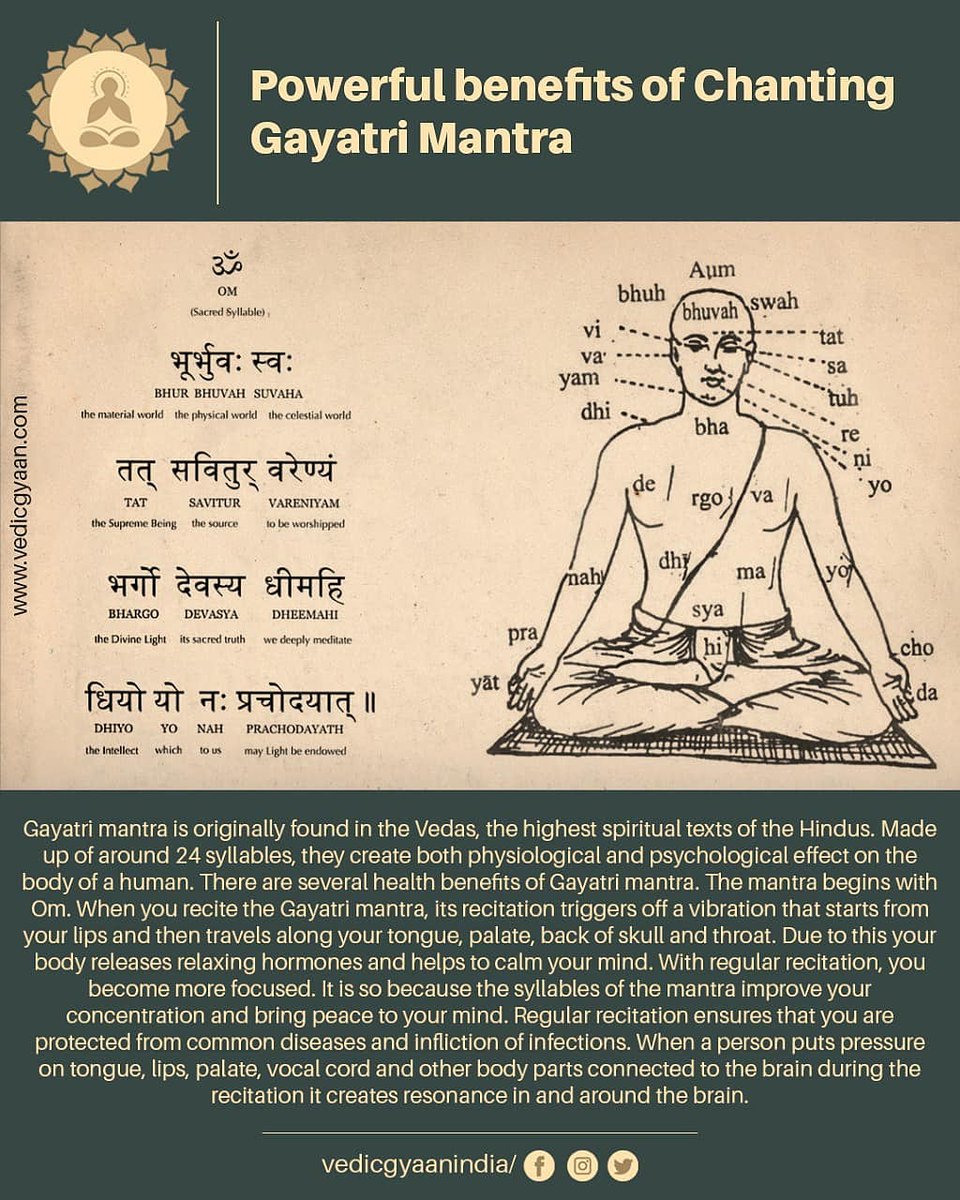
Gayatri Mantra, also known as the Savitri Mantra, is a deeply worshiped mantra from the Rig Veda (Mandala 3.62.10), one of the highest spiritual texts of the Sanatan Dharma, dedicated to Savitr. Savitr in Vedas is an Aditya, offspring of the mother goddess Aditi. 

The sun before sunrise is mentioned as “Savitr” in Rig Veda, and “Surya” after sunrise. Gayatri, the name of the Goddess of the Vedic Mantra in which the verse, made up of 24 syllables, is contrived. They produce intense Physical and Psychological effects on the human body.
The Mantra precedes with #om . When we chant the Mantra, its recitation activates the vibrations that start from your lips and moves along with the tongue, palate, back of the skull, and throat makes our body release relaxing hormones and helps to calm our mind.
Regular Recitation of the Mantra makes you more focused by improving your concentration and peace to the mind.
An International Journal of Yoga recently revealed that people who regularly chanted the #gayatrimantra had better memory and concentration.
An International Journal of Yoga recently revealed that people who regularly chanted the #gayatrimantra had better memory and concentration.
Read full blog on: vedicgyaan.com/powerful-benef…
• • •
Missing some Tweet in this thread? You can try to
force a refresh








